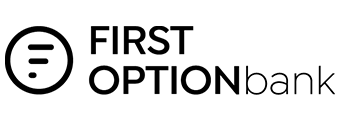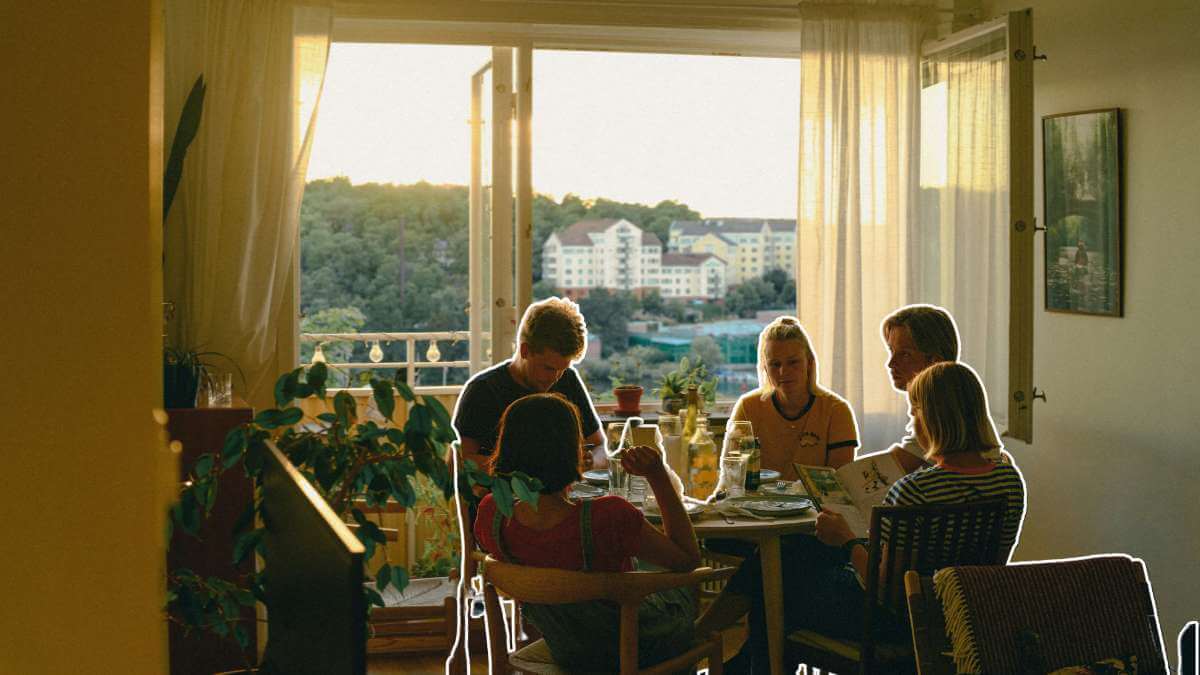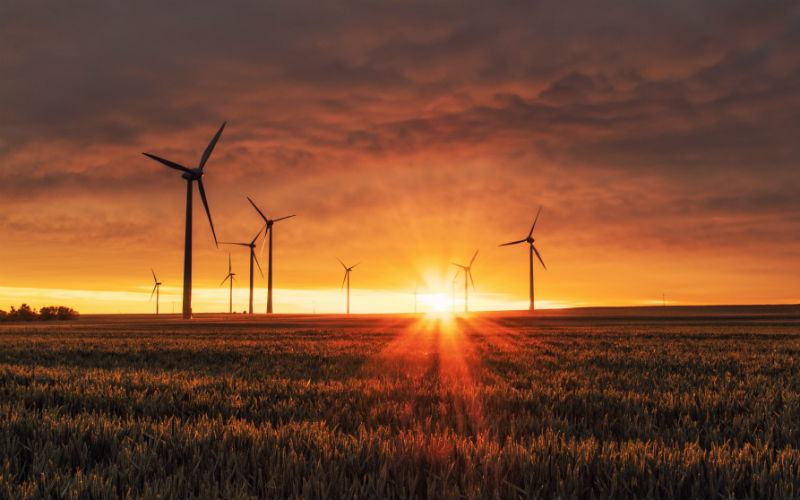Even if it’s a tin with a few cents given to you by generous passers-by, most Aussies have savings of some description. But as we’re all acutely aware, some of us have much more than others.
Check out some of the latest data on how much the average Aussie saves.
Household savings ratio
Perhaps the most official measure of how Aussies' savings are tracking is the Australia’s ‘household saving ratio’, published by the ABS each quarter. This figure, expressed as a percentage, essentially reflects how much of their disposable income (income after taxes, interest costs, insurance premiums etc.) the average Australian is saving. In the December 2024 quarter, the household savings rate was 3.8%, which suggests Aussie households on the whole spent 96.2% of their disposable income in that period.
You can see how the household saving ratio changes with economic conditions. From March-June 2020 (peak pandemic) Aussie households saved a record 23.6% of their income, which makes sense given much of the country was locked down during that time so there wasn’t much to spend on. With budgets stretched by inflation and rising interest rates over the past couple of years, in September '23 the household saving ratio sank to the lowest since December 2007, hitting just 1.5%.
Average savings in Australia
While the household saving ratio is a solid snapshot of how much people are saving at any one time, it doesn't tell you how much money Aussies have accumulated.
In January 2025, Westpac released data on the average savings account balance of its customers by age:
| Age | Average Balance | Median Balance |
|---|---|---|
|
17 and under |
$4,769 |
$1,135 |
|
18 to 24 |
$13,069 |
$2,410 |
|
25 to 29 |
$19,165 |
$2,200 |
|
30 to 34 |
$21,394 |
$1,104 |
|
35 to 44 |
$29,769 |
$811 |
|
45 to 54 |
$52,836 |
$1,429 |
|
55 to 64 |
$87,891 |
$5,316 |
|
65 to 74 |
$101,004 |
$15,829 |
|
75+ |
$130,597 |
$31,424 |
As you can see, there's a hefty difference between average (mean) and median balances. In our opinion, median is a more accurate measure of the everyday Australian, since the mean is likely blown out by the extremely wealthy at the top end of the scale. A few billionaires banking with Westpac would significantly drive up the mean.
You might have expected a stronger correlation between age and savings account balance - older people have had more time to accumulate wealth. However, the Westpac data suggests Australians aged between 30 and 54 have the lowest balance among adults.
The likeliest explanation is that this cohort is less likely to keep the majority of their wealth in savings accounts given they're more likely to be paying off a mortgage, which tends to take up a hefty chunk of disposable income. Even if your repayments leave you with plenty of spare money, it's often more beneficial to use this money to make extra repayments into your home loan, perhaps taking advantage of an offset account or redraw facility. This might also be the time where people are more likely to hold higher-risk investments like equities.
Past the age of 55 though, balances appear to increase significantly with age. This could be because older Australians are more likely to have already paid off their mortgage, or - having had a longer time to build their wealth - are more content with the modest, but secure returns offered by savings accounts.
Australian households collectively held about $1.718 trillion in 'currency and other deposits' in June 2024 (according to the ABS). That works out to be about $80,000 per adult, but again this is an aggregated estimate - as we mentioned, median figures like those provided by Westpac are likely to be more representative.
Read more: Australian wealth statistics
Average savings by generation
In June 2024 The Infochoice State of Aussies' Savings Survey asked a representative sample of more than 1,000 Australian adults to state how much they currently had in savings, including funds in savings accounts, term deposits, transaction accounts, mortgage offset accounts, redraw facilities and spare cash. More than half (52.2%) reported having less than $20,000, which suggests the median savings balance is a bit under this threshold. Alarmingly, nearly one in six (16.2%) said they had less than $1,000 - roughly translating to 3.4 million people when extrapolated across the 21 million adults in Australia.
Naturally, older respondents tended to have more savings than younger respondents. This was the breakdown by generation:
| Savings Amount | Total | Baby boomers (Born 1946 - 1964) | Gen X (Born 1965 - 1980) | Millennials (Born 1981 - 1996) | Gen Z (Born 1997 - 2012) |
|---|---|---|---|---|---|
| $999 or less | 16.2% | 15.1% | 17.0% | 14.7% | 19.1% |
| $1,000 - $4,999 | 16.0% | 12.4% | 18.9% | 15.5% | 16.5% |
| $5,000 - $19,999 | 20.0% | 16.2% | 17.0% | 19.3% | 29.3% |
| $20,000 - $49,999 | 16.8% | 11.9% | 14.7% | 21.1% | 15.4% |
| $50,000 - $99,999 | 13.2% | 15.1% | 13.1% | 12.6% | 12.8% |
| $100,000 and over | 17.8% | 29.2% | 19.3% | 16.8% | 6.9% |
Gen Z (1997 - 2012): Nearly one fifth (19.1%) have less than $1,000 in savings, and more than a third have less than $5,000.
Baby Boomers (1946 - 1964): Nearly a third have $100,000 or more in savings, indicating a significant disparity in savings compared to younger generations.
Meanwhile, there were some notable differences in savings between the different parts of the country. This was the breakdown by state/territory:
| Savings Amount | Total | NSW | VIC | QLD | WA | SA | TAS | ACT | NT |
|---|---|---|---|---|---|---|---|---|---|
| $999 or less | 16.2% | 13.3% | 14.6% | 17.3% | 14.6% | 18.0% | 27.1% | 24.3% | 12.5% |
| $1,000 - $4,999 | 16.0% | 10.0% | 17.6% | 18.9% | 15.2% | 15.8% | 25.0% | 18.9% | 37.5% |
| $5,000 - $19,999 | 20.2% | 19.3% | 22.0% | 19.4% | 24.5% | 18.0% | 12.5% | 18.9% | 25.0% |
| $20,000 - $49,999 | 16.7% | 21.7% | 15.6% | 10.7% | 15.9% | 15.8% | 20.8% | 24.3% | 0.0% |
| $50,000 - $99,999 | 13.1% | 14.5% | 14.6% | 15.3% | 11.3% | 12.8% | 4.2% | 8.1% | 0.0% |
| $100,000 and over | 17.9% | 21.3% | 15.6% | 18.4% | 18.5% | 19.5% | 10.4% | 5.4% | 25.0% |
Tasmania (TAS) and the Australian Capital Territory (ACT): These regions had the highest portion of residents with less than $1,000 in savings at 27.1% and 24.3%, respectively. They also had the smallest portion of residents with $100,000 or more in savings (TAS: 10.4%, ACT: 5.4%).
New South Wales (NSW) appeared to be the wealthiest state, with the highest portion (21.3%) of residents having $100,000 or more in savings and the lowest portion (13.3%) with less than $1,000.
Finally, housing status appeared to have a very significant impact on respondents' savings balances:
| Savings Amount | Total | Own Mortgage-Free | Own with Mortgage | Rent Alone | Rent with Others | Live with Family Rent-Free | Other |
|---|---|---|---|---|---|---|---|
| $999 or less | 16.1% | 8.8% | 10.6% | 28.1% | 27.1% | 21.1% | 20.0% |
| $1,000 - $4,999 | 16.0% | 5.8% | 14.9% | 27.1% | 20.8% | 17.1% | 20.0% |
| $5,000 - $19,999 | 20.1% | 9.9% | 21.6% | 16.7% | 23.2% | 27.6% | 33.3% |
| $20,000 - $49,999 | 16.6% | 12.3% | 22.0% | 16.7% | 11.6% | 7.9% | 13.3% |
| $50,000 - $99,999 | 13.1% | 18.1% | 13.6% | 8.3% | 8.7% | 19.7% | 0.0% |
| $100,000 and over | 18.0% | 45.0% | 17.3% | 3.1% | 8.7% | 6.6% | 13.3% |
Unsurprisingly, Aussies who own property without a mortgage appear to be the most financially secure. Nearly half (45%) have more than $100,000 in savings. Conversely, only 3.3% of those who rent alone had over $100k, with 27.1% having less than $999.
Mortgage holders: More than one in ten (10.6%) had less than $1,000 in savings, while over a quarter (25.5%) had less than $5,000.
Renters: More than a quarter (27.4%) had less than $1,000 in savings, and over half (50.2%) had less than $5,000.
Where do Aussies keep their savings?
The same InfoChoice survey also asked respondents where they kept the majority of their savings. Overall, this was the breakdown:
| Keep most savings in… | Percentage of Aussies |
|---|---|
| Term Deposit | 6.6% |
| Transaction Account | 8.2% |
| Savings Account | 57.4% |
| Offset Account | 18.9% |
| Redraw Account | 4.2% |
| Physical Cash | 1.6% |
| Other | 3.1% |
The most popular place to keep savings was savings accounts (quelle suprise) with 57.4% reporting that was where the majority of their money was. This was followed by offset accounts (18.9%), which are popular with mortgage-holders since funds stored in a mortgage offset account effectively generate a tax-free return equal to the home loan’s interest rate, while remaining accessible at any time. Redraw accounts are very similar, although funds generally aren’t quite as accessible.
Here’s how the results differed by generation:
| Keep most savings in… | Total | Baby boomers (Born 1946 - 1964) | Gen X (Born 1965 - 1980) | Millennials (Born 1981 - 1996) | Gen Z (Born 1997 - 2012) |
|---|---|---|---|---|---|
| Term Deposit | 6.6% | 13.0% | 7.3% | 4.4% | 3.7% |
| Transaction Account | 8.2% | 12.4% | 11.6% | 4.1% | 8.0% |
| Savings Account | 57.4% | 50.8% | 49.4% | 55.2% | 79.3% |
| Offset Account | 18.9% | 11.9% | 21.6% | 27.1% | 5.3% |
| Redraw Account | 4.2% | 5.9% | 5.4% | 4.4% | 0.5% |
| Physical Cash | 1.6% | 1.1% | 1.2% | 1.8% | 2.1% |
| Other | 3.1% | 4.9% | 3.5% | 3.1% | 1.1% |
As you’d expect, Gen Z are much less likely than older Aussies to keep savings in an offset or redraw account since Gen Zers are less likely to have a mortgage. However, Gen Z also seem to be eschewing term deposits, with just 3.7% storing most of their savings in TDs compared to 6.6% of the adult population.
What about superannuation?
For many Aussies, their biggest chunk of savings is locked away until they turn 65. The most recent figures for superannuation are from the 21/22 financial year, released by the ATO in June ‘24. Overall, the mean superannuation balance across the whole population was $164,000, while the median (which isn’t blown out by the earners at the top end) was just under $58,000. Both measures were down from the preceding financial year.
This was the breakdown for 21/22 by income:
| Income | Number of individuals | Average super balance |
|---|---|---|
| $18,200 or less | 1,849,779 | $161,473 |
| $18,201 to $45,000 | 3,556,433 | $98,453 |
| $45,001 to $180,000 | 6,656,624 | $142,818 |
| $120,001 to $180,000 | 1,300,483 | $295,925 |
| $180,001 or more | 744,675 | $573,053 |
| No income tax return | 3,057,652 | $132,854 |
| Total | 17,165,646 | $164,126 |
It sounds pretty bizarre that those earning less than $18,200 have an average super balance above those who earn up to $180,000, but you need to factor in retirees, who are living off their superannuation balance with no other income.
Other than this, higher super balances are broadly correlated with higher income.
Why do Australians save?
It’s easy to see your savings balance (and that of your peers) as a scoreboard, but hopefully most of us are able to look beyond the gamified aspects of saving and have a purpose underlying your efforts. According to the InfoChoice Survey, the top five purposes for saving are for a home deposit (cited by 17% as their primary savings purpose), debt reduction (15.6%), travel (14.5%), retirement (13.8%) and emergencies (11.8%).
| Primary Savings Purpose | Total |
|---|---|
| Home deposit | 17.0% |
| Debt reduction | 15.6% |
| Investment | 8.5% |
| Travel | 14.5% |
| Wedding | 1.4% |
| Emergency | 11.8% |
| Business | 0.6% |
| Retirement | 13.8% |
| Car | 2.0% |
| Furniture | 0.5% |
| Leisure | 3.1% |
| Luxury | 0.8% |
| Renovation | 2.1% |
| Children | 3.5% |
| Health Procedure | 0.6% |
| Pet | 0.7% |
| Other | 3.5% |
The generational breakdown shows how priorities shift as we get older:
| Total | Baby boomers (Born 1946 - 1964) | Gen X (Born 1965 - 1980) | Millennials (Born 1981 - 1996) | Gen Z (Born 1997 - 2012) | |
|---|---|---|---|---|---|
| Home deposit | 17.0% | 1.6% | 7.8% | 21.4% | 35.4% |
| Debt reduction | 15.6% | 9.2% | 20.2% | 20.2% | 6.3% |
| Investment | 8.5% | 2.2% | 6.6% | 12.4% | 9.5% |
| Travel | 14.5% | 16.2% | 13.2% | 11.6% | 20.6% |
| Wedding | 1.4% | 0.0% | 0.0% | 2.8% | 1.6% |
| Emergency | 11.8% | 11.4% | 15.1% | 11.9% | 7.4% |
| Business | 0.6% | 0.0% | 0.0% | 0.8% | 1.6% |
| Retirement | 13.8% | 40.0% | 18.2% | 3.6% | 3.2% |
| Car | 2.0% | 2.2% | 1.6% | 1.8% | 2.6% |
| Furniture | 0.5% | 0.0% | 0.8% | 0.3% | 1.1% |
| Leisure | 3.1% | 7.0% | 2.3% | 2.1% | 2.6% |
| Luxury | 0.8% | 0.5% | 0.8% | 1.0% | 0.5% |
| Renovation | 2.1% | 2.2% | 1.2% | 3.4% | 0.5% |
| Children | 3.5% | 2.2% | 5.0% | 3.9% | 2.1% |
| Health Procedure | 0.6% | 1.6% | 0.8% | 0.0% | 0.5% |
| Pet | 0.7% | 0.5% | 1.2% | 0.3% | 1.1% |
| Other | 3.5% | 3.2% | 5.4% | 2.6% | 3.2% |
A home deposit is a bigger priority for younger Australians given older generations are more likely to already own property. Another interesting finding was that more than 20% of both Gen X and Millennials are primarily saving to reduce debt, as opposed to more exciting targets like travel or buying a property. This probably speaks to high interest rates as well as increasing indebtedness - as the below table shows, only 3% of homeowners without a mortgage said debt reduction was their biggest priority, shooting up to 27.9% of those with outstanding mortgages:
Savings priority of homeowners
| Own my residence mortgage-free | Own my residence with a mortgage | |
|---|---|---|
| Home deposit | 3.0% | 7.2% |
| Debt reduction | 3.0% | 27.9% |
| Investment | 12.4% | 10.3% |
| Travel | 13.6% | 14.7% |
| Wedding | 0.6% | 2.0% |
| Emergency | 6.5% | 9.9% |
| Business | 0.0% | 0.4% |
| Retirement | 39.6% | 11.4% |
| Car | 2.4% | 0.9% |
| Furniture | 0.0% | 0.4% |
| Leisure | 5.3% | 2.4% |
| Luxury | 1.2% | 1.1% |
| Renovation | 2.4% | 3.5% |
| Children | 4.7% | 3.9% |
| Health Procedure | 0.0% | 0.4% |
| Pet | 2.4% | 0.0% |
| Other | 3.0% | 3.5% |
How to save money
If you’re looking through some of these numbers and feeling slightly insecure about your own block of savings, there might be some simple changes you could make to help you build up your own pile.
Depending on who you ask, you’ll get various answers to the same question: how much should I be saving out of every paycheque? You’ll find that most ‘experts’ will say between 10-30%, but this obviously isn’t possible for people experiencing mounting debts or with other expenses, like caring for a sick loved one. It also depends on your income - if you make $200,000 a year after tax, then it likely doesn’t stretch your budget too much to put away upwards of 40% of income, while if you’re on $50,000 that’s much less realistic.
The first step towards savings is budgeting – doing a monthly budget of all your expenses can give you a good starting point. From there, you can cut out unnecessary expenses or prioritise more important ones. You should then move on to clearing debts if you have them. Having money sitting in a savings account might not mean much if you’re getting charged through the nose in loan interest.
When you do decide to set a savings goal, start small, and work from there. Achieving a realistic goal can give you the confidence to kick on and save bigger amounts over time.
Read more: 30 ways to save money on groceries
Read more: 60 ways to save money
Article first published August 2019 by William Jolly, last updated August 2024
The table below displays a snapshot of savings accounts in Australia with some of the highest interest rates on the market:

- Bonus variable rate for the first 4 months on balances up to $250k and high variable ongoing rates.
- No fees and no monthly requirements to earn interest.
- Easily open an account online in 3 minutes.
Article first published August 2019 by William Jolly.
First published on August 2024
Image by Marco Lopez via Unsplash








 William Jolly
William Jolly
 Emma Duffy
Emma Duffy













